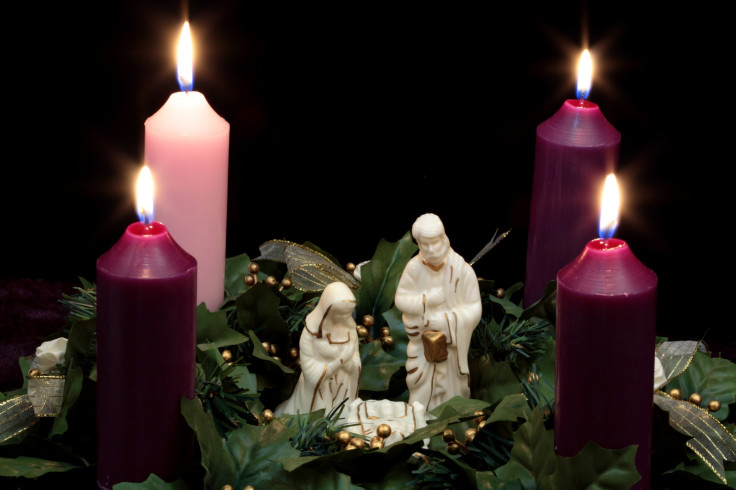The Christian festival of Advent begins
The weeks before Christmas are about more than opening calendars for devout Christians.
Advent — the four weeks leading up to Christmas — begins this year on Sunday, 27 November.
This four-week festival is seen by many as a way of looking forward to the festivities of Christmas, when people gather together with their families before the New Year begins. But there is much more to Advent.
Originally, Advent did not have anything to do with Christmas. Historians believe that in the 4th and 5th Centuries, Advent was a period Christians used to prepare themselves for baptism.
Back then, the festival of the Epiphany, which is always held 12 days after Christmas to mark the Three Wise Men's meeting the baby Jesus, was when many Christians were baptised. In the 40 days before the Epiphany, those to be baptised carried out penance (asked for forgiveness of sins), prayed and fasted: this period was called Advent.
Advent was not linked to Christmas until the 6th Century, when Roman Christians began to use the event as a preparation to celebrate Jesus's birth.

Advent today
In modern times, Advent runs for the four Sundays before Christmas, beginning on the Sunday between 27 November and 3 December, until Christmas Eve on 24 December.
It marks the end of the Christian year, which begins on Christmas Day.
To devout Christians, Advent is both a period to reflect on Jesus's birth and to celebrate his return in the Second Coming.
Masses held during the first two weeks of Advent are aimed at helping worshippers reflect on the previous year, and the origins of Christianity in the Old Testament stories of a coming Messiah. The final two weeks mark Jesus's birth, which was declared by John the Baptist and angels visiting various people – such as the shepherds who feature in nativity plays in schools and churches across the world.
The Roman Catholic church still views Advent as a time of penitence. For centuries, it banned its members from singing and dancing, and holding celebratory events, in favour of fasting for three days a week. The fasting was only abolished around 1920.

Marking Advent
There were many folk traditions centred around the celebration of Advent.
In England, poor women, would carry two dolls representing Jesus and his mother Mary. People who were shown the dolls were expected to give the women a halfpenny coin, or else be cursed with bad luck.
In Normandy, France, farmers would employ children to run through fields and light bushels of straw. The tradition was aimed at driving out vermin from the fields.
In Rome, bagpipe players – pifferari – would walk through the city and play at shrines to Mary and Jesus. According to Italian tradition, shepherds played bagpipes when they were introduced to the infant Jesus after his birth.
Advent wreaths, holding four candles, which are lit one-by-one on Advent Sundays, are also used to mark the approach of Christmas. Some wreaths hold five candles - the fifth being lit during the first mass held on Christmas Day.
The most recent traditions are Advent calendars. These colourful decorations, kept in homes and outside churches, feature doors which are opened on each day of Advent. Behind the door is a festive or religious picture – and for the luckier a piece of chocolate.
© Copyright IBTimes 2025. All rights reserved.





















